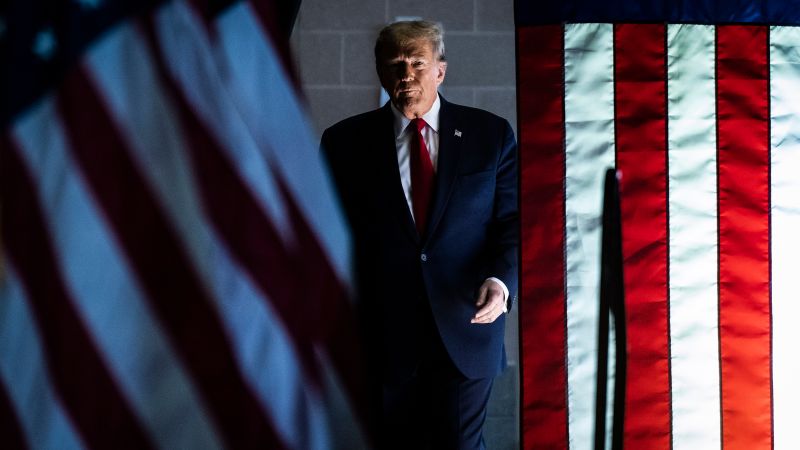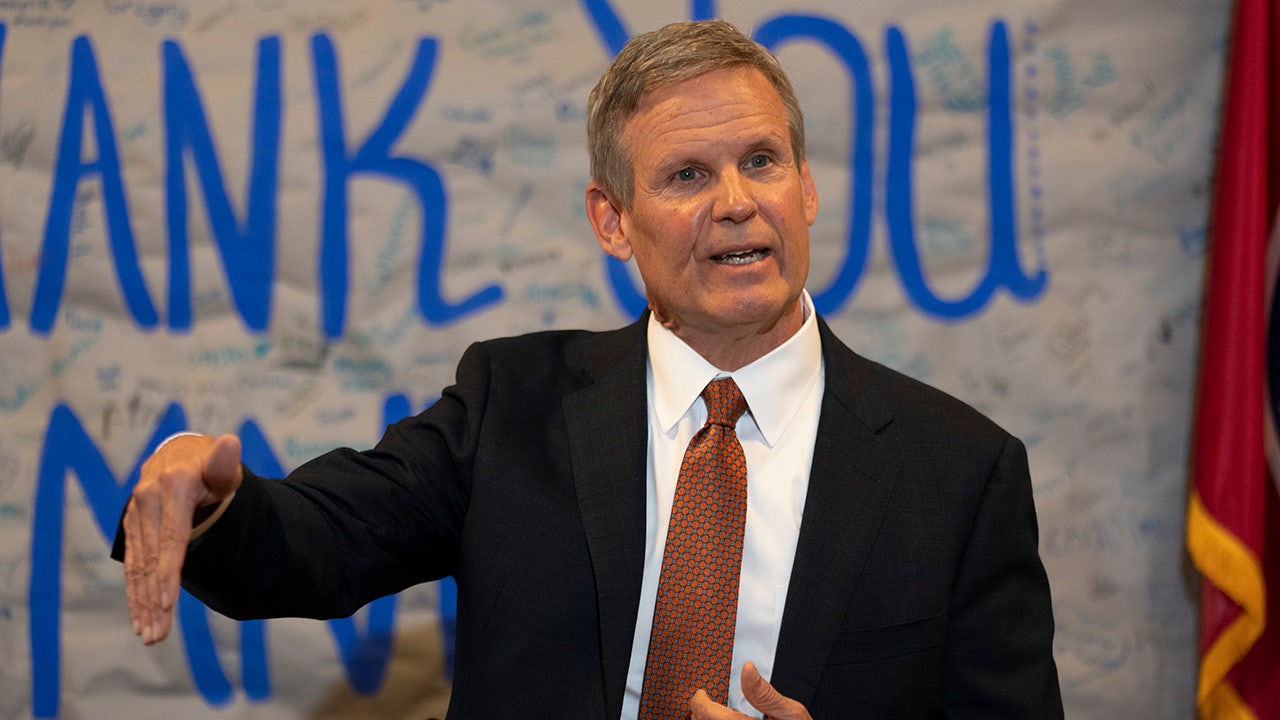Reporting Stefania Spezzati, Oliver Hirt and Elisa Martinuzzi; additional reporting by John O’Donnell; Editing by Paritosh Bansal and Nick Zieminski
World
Exclusive: Swiss authorities, banks mull new rules to prevent bank runs -sources
/cloudfront-us-east-2.images.arcpublishing.com/reuters/LWLVNP5SNNKLTMRPYOB3TYHX4I.jpg)
[1/3]A logo of Swiss bank UBS is seen in Zurich, Switzerland March 29, 2023. REUTERS/Denis Balibouse Acquire Licensing Rights
LONDON/ZURICH, Nov 2 (Reuters) – Swiss authorities and lenders, including UBS (UBSG.S), are discussing new measures to prevent bank runs after Credit Suisse’s rescue earlier this year, four sources familiar with the matter said, a move that could affect billions in deposits.
The talks, which have not been previously reported and are part of a broader review of the country’s banking rules, are intended for the top Swiss banks and could target mainly their wealth clients, two of the sources said.
Among the measures being discussed is the option to stagger a greater portion of withdrawals over longer periods of time, one of the sources said. Imposing fees on exits is also an alternative being discussed, two of the sources said.
Rewarding clients who tie up their savings for longer with higher interest rates is being debated, one of the sources said.
Discussions are in the early stages, according to two sources. The Swiss National Bank and the Swiss Finance Ministry are part of the conversations with lenders, one source said.
A representative for the finance ministry said that the issue of bank runs is part of an overall evaluation of the too-big-to-fail regulatory framework in Switzerland. The Swiss government is due to publish a report in spring next year, he added.
The SNB said the review of too-big-to-fail rules, which focuses on so-called systemically important banks, is ongoing. The central bank declined to comment on ongoing work.
UBS declined to comment.
Reuters could not determine which other banks were involved in the conversations with Swiss authorities.
In Switzerland, UBS, Raiffeisen Group, Zürcher Kantonalbank and PostFinance are deemed systemically important lenders as their failure could cause serious damage to the country’s economy and financial system.
A spokesperson for PostFinance said it is not involved in the discussions while a spokesperson for ZKB declined to comment. A representative for Raiffeisen did not have an immediate comment.
DEPOSIT RUNS
Earlier this year, some regional U.S. banks and Credit Suisse suffered massive deposit runs, causing some to fail and regulators to intervene to prevent a broader financial crisis.
Regulators worldwide have since been grappling with the risk of bank runs, which in the era of digital banking have accelerated in speed.
In the case of Credit Suisse, the Swiss lender suffered unprecedented outflows and came close to a disorderly wind-down in March. Wealth managers tend to have a greater concentration of deposits than some of the retail banking competitors, which emerged as a weakness for the lender.
In the last three months of 2022, the bank, at the time Switzerland’s second-largest lender, was hit by 111 billion Swiss francs of outflows. Another 61 billion Swiss francs left in the first quarter, with the wealth unit which caters to affluent clients hit the hardest.
Its near-implosion prompted the SNB to step in with emergency funding and to facilitate its takeover by UBS, making the country’s biggest bank even larger.
While it’s early days, the measures under discussion in Switzerland are making some people nervous.
They risk penalizing Swiss banks if they were to be introduced only in Switzerland, one of the sources said.
UBS is trying to attract customers with above-market rates on deposits, Reuters reported in October.
The new rules could dent competitiveness or, in a more extreme scenario, push clients to withdraw their money preemptively, the person added.
Our Standards: The Thomson Reuters Trust Principles.

World
Has South Africa Truly Defeated Apartheid?

Thirty years ago, the South African miracle came true. Millions voted in the country’s first democratic elections, seemingly delivering a death blow to apartheid.
The African National Congress rose to power under the leadership of Nelson Mandela and used the Freedom Charter, a decades-old manifesto, as a guide to forming a new nation.
The charter’s 10 declarations offered a vision for overcoming apartheid through a free, multiracial society, with quality housing, education and economic opportunities for all.
As South Africans celebrate 30 years of freedom and prepare to vote in a pivotal national election, we looked at how far the country has come in meeting the Freedom Charter’s goals.
When the apartheid government was toppled in South Africa, ending white minority rule, people around the world shared in the excitement and optimism that a more just society would emerge. A generation later, the country’s journey provides a broader lesson: It is far easier to rally for an end to racism than it is to undo entrenched inequities and to govern a complicated country.
The African National Congress won the 1994 election on the promise of “a better life for all.” But for many that promise has fallen short. Polls now suggest that in the election scheduled for May 29, the party risks losing its absolute majority in the national government for the first time.
No one doubts that South Africa has made strides since the days of legalized racial oppression. Democracy has brought a growing Black middle class, access to better education across racial lines and a basic human dignity once stolen from the Black majority.
But there also has been a widening gap between rich and poor, a breakdown in basic services like electricity and water, and the continued isolation of Black families stuck in ramshackle homes in distant communities.
Black South Africans, who make up 81 percent of the population, often argue that they’ve gained political freedom, but not economic freedom — and remain trapped in the structure of apartheid.
We went through the Freedom Charter’s declarations — each ending in an exclamation point — to measure South Africa’s progress and shortcomings over the past 30 years.
The ideal
THE PEOPLE SHALL GOVERN!
The reality Democracy is stable, but South Africans are disillusioned, and most no longer vote.
Sources: Collette Schulz-Herzenberg, “The South African non-voter: An analysis”; Konrad Adenaur Stiftung, 2020 (South Africa); Pew Research (United States and U.K.)
On a continent where coups, autocrats and flawed elections have become common, South Africa is a widely admired exception.
Since 1994, the country has held national elections every five years, with local elections in between. Presidents have changed, but the party in power — the A.N.C. — never has. Despite this, there have never been any serious doubts about the integrity of those electoral contests. A record 52 parties will compete in the national election this year.
Despite the electoral stability, politics have been dangerous. Fierce conflict within the A.N.C. has resulted in many assassinations over the years. The A.N.C.’s access to state resources as the governing party has fueled many of the disputes and led to widespread corruption — from top national officials down to local councilors.
The enrichment of A.N.C. leaders while many people barely earn enough to feed themselves has shaken the faith of many South Africans in their democratic system.
Last year, 22 percent of South Africans approved of the functioning of the country’s democracy, down from 63 percent in 2004, according to surveys from the Human Sciences Research Council.
The ideal All National Groups Shall Have Equal Rights!
The reality
Society is free and equal on paper, but economic barriers endure.
Under apartheid, race restricted every aspect of life for South Africans who were Black, Indian and colored — a multiracial classification created by the government. There were strict limits on where they could live, attend school, work and travel. Laws enforced this segregation, and partaking in politics was criminalized.
But the democratic government drafted a constitution that enshrined equal rights for all.
South Africa has become a place where people of all races often dine, worship and party together. Gay rights are largely accepted. There is a free and vigorous press, and protests and open political debate are a part of life.
But many of the economic barriers created under apartheid still endure.
By one measure, the World Bank has ranked South Africa as the most unequal country in the world. Ten percent of the population holds about 71 percent of the country’s wealth, while the bottom 60 percent holds just 7 percent of assets, according to the World Bank.
To a large extent, the wealth disparities have kept millions of Black South Africans relegated to some of the most deplorable conditions.
Just look at the place in the Soweto community of Kliptown where hundreds of anti-apartheid activists gathered to draft the Freedom Charter in 1955. It is now known as Walter Sisulu Square, named for a prominent anti-apartheid activist.
Nearly two decades ago, the government built a large concrete complex around the square, with restaurants, offices and a hotel. But because of a lack of maintenance and huge riots in 2021 that stemmed from political grievances, most of the businesses are now gutted, littered and stinking of sewage. Informal traders eke out a living nearby selling sandwiches, clothes and fruit.
Across adjacent railroad tracks sits an all-Black neighborhood where most residents live in tin shacks, use outdoor latrines, rely on jury-rigged wires for electricity and navigate craggy dirt roads.
Walter Sisulu Square in Kliptown, Soweto, where South Africa’s Freedom Charter was signed in 1955, is now dilapidated.
Joao Silva/The New York Times
Jack Martins, 54, who lives in the neighborhood, had a cellphone repair shop in the complex, but it did not survive the riots. He now plies his trade from a table on the sidewalk. He secured public housing, but had to pay a bribe to get it, he said. Two of his sons could not get into university because there was not enough space, and his daughter, despite having a mechanical engineering degree, has been unable to find stable work. He is fed up with the near-daily, hourslong electricity outages caused by the failing state power utility.
“What is this government doing for us?” he said. “Absolutely nothing.”
The ideal
The People Shall Share in the Country’s Wealth! The reality
A wide economic gulf persists between Black and white South Africans.
The Black middle and upper classes have grown significantly. In 1995, just 350,000 Black South Africans lived in households that were among the top 15 percent in income, according to researchers at the University of Cape Town’s Liberty Institute of Strategic Marketing. By 2022, that number had grown to about 5.6 million.
Still, Black families are underrepresented among rich households.
Many expected something better this far into democracy. Much of the nation’s wealth remains in white hands.
Black South Africans had a stake in only 29 percent of the companies listed on the Johannesburg Stock Exchange, according to a 2022 report by South Africa’s Black Economic Empowerment Commission. Not a single entity on the exchange was fully Black-owned, the report said.
Economists say the country’s economy never took off enough to allow for a greater redistribution of wealth. Even when South Africa experienced its strongest stretch of economic growth in the first decade and a half of democracy, it still lagged behind its peers in Africa and other upper-middle-income countries. Since then, growth has been tepid, and contraction since the Covid-19 pandemic has been sharper than that in similarly sized economies.
Sources: Harvard Growth Lab analysis of World Economic Outlook (South Africa and sub-Saharan Africa) and World Development Indicators (upper-middle-income countries).
Government rules have allowed Black South Africans to gain a greater stake in industries like mining, where Black ownership has grown from 2 percent to 39 percent over the past two decades. But the gains have gone to relatively few people at the top.
However, the Bafokeng kingdom, an ethnic group within South Africa, has shown what is possible when a community gets its fair share of its resource wealth. The kingdom sits on rich platinum deposits. After a court victory in 1999 that affirmed its land rights, the kingdom used its platinum dividends to build a school with a large campus and a modern clinic, and to invest in other industries. Most families live in large brick homes that are the envy of other rural villages.
The ideal
The Land Shall Be Shared Among Those Who Work It!
The reality White South Africans continue to own most of the land.
At the end of apartheid, when almost all of South Africa’s agricultural land was white-owned, Mr. Mandela’s government pledged in 1994 to transfer 30 percent of it into Black hands within a few years, by encouraging white landowners to sell.
The government failed to meet its goal, and it stretched the deadline to 2030. So far, about 25 percent of white-owned farmland has been transferred to Black ownership, mostly through the purchase of land by the government or Black individuals, according to Wandile Sihlobo and Johann Kirsten, agricultural economists at Stellenbosch University.
White South Africans make up roughly 7 percent of the population, but white-owned farms still cover about half of the country’s entire surface area, according to Mr. Sihlobo and Mr. Kirsten.
A worker on a Black-owned farm letting out cattle to graze near Carletonville, South Africa.
Joao Silva/The New York Times
In the first decade of democracy, the government gave Black people full ownership of the white-owned farms it had bought. Owning the land meant that Black families had the chance not only to feed and support themselves but also advance.
But the government is no longer giving land to Black South Africans outright, offering long-term leases instead, Mr. Sihlobo and Mr. Kirsten said. Without ownership, Black farmers cannot generate wealth by using the land as collateral to get a bank loan. That has prevented Black farmers from expanding their operations to be commercially competitive.
Only about 7 percent of commercial-scale farms — those that sell to major grocers or export their products — are Black-owned. Only about 10 percent of the food produced by commercial farms in South Africa comes from Black-owned farms, about the same share as in the 1980s, Mr. Sihlobo said.
In the first decade of democracy, more than 930,000 mostly Black and colored farm workers were evicted from farms despite new laws intended to allow them to spend their lives on the farms where they worked.
“We haven’t been able to live up to those ideals” of Black land ownership, Mr. Sihlobo said.
The ideal
There Shall Be Work and Security! The reality
Unemployment has risen since the end of apartheid.
Black South Africans are unemployed at far higher rates than their white peers, and that disparity has not improved over time.
Source: Statistics South Africa Note: Graphic shows the expanded definition of unemployment, which includes those discouraged from seeking work.
The high unemployment rate has given rise to a hustle culture that sends many South Africans to the streets early each morning in search of work.
Zinhle Nene, 49, has been waking up by 5:30 a.m. most days and waiting on a corner in downtown Johannesburg with hundreds of others seeking day jobs. She left her low-paying job as a home health aide because the transportation to work was too expensive.
“It’s heartbreaking because we come here and we don’t even have food,” she said, wiping away tears as the hours passed. “Sometimes, you even get home, there’s nothing. You just drink water and then you sleep.”
Poverty has decreased since the start of democracy. Still, it remains very high. Nearly two out of every three Black South Africans lived below the upper-bound poverty line in 2015 — the most recent data available — meaning they had access to less than about $80 a month. Only 1 percent of white South Africans lived below that line.
The ideal
There Shall Be Houses, Security and Comfort!
The reality
Millions of new homes were constructed, but hardly enough.
Peter Mokoena broke down in tears last November inside the modest two-bedroom house the government had just given him. It sat alongside dozens of other homes just like it, on the freshly paved roads of a new subdivision about half an hour southeast of Johannesburg.
“I’m so happy, happy, happy, happy for this house,” said Mr. Mokoena, 74, who had been living in a tin shack so leaky that his furniture was soaked when it rained. “Now, it feels like I’m in heaven.”
The government has built 3.4 million houses since 1994, and given ownership of most of them for free to poor South Africans. Some units, known as social housing, are rented out at below-market rates. The government also has embarked on several “mega city” projects, in partnership with the private sector, to cluster together various types of housing and services like day care centers.
Many South Africans have moved into formal homes from makeshift structures, and access to basic services like electricity and piped water has increased. But frequent power and water outages have made those services unreliable, leading to anger and frustration nationwide.
Mr. Mokoena waited 27 years for his house. Many are still waiting. In the meantime, some squat in downtown buildings. Others build shacks in any open space they can find. Or they rent small backyard units built behind houses — an effort the government is supporting.
New government housing has often ended up in areas far from jobs and economic activity, perpetuating the apartheid system of marginalizing Black people to outlying townships.
Sources: Spatial Tax Panel (employment data); WorldPop (population density)
Note: The area outlined in yellow represents parts of Johannesburg with at least 10,000 full-time equivalent employees in formal employment.
The ideal
The Doors of Learning and Culture Shall Be Opened!
The reality
Education is open to all, but quality and seats are falling short.
Nokuthula Mabe anxiously sat on her suitcase in the February heat outside North-West University in the city of Mahikeng, waiting with about a dozen other high-school graduates hoping for a spot. The university had received more than 181,000 applications for 11,717 slots.
In many ways, Ms. Mabe epitomized post-apartheid progress simply by graduating from her overcrowded village school near the Botswana border.
Nokuthula Mabe, right.
Joao Silva/The New York Times
In the 1950s, only 10 percent of Black children finished high school. By 2021, that number had risen to 58 percent, according to government statistics.
Despite these gains, significant racial disparities persist.
Sources: Equal Education Law Centre analysis of data from Statistics South Africa General Household Survey; Department of Basic Education
Note: Shows share of 22- to 25-year-olds who have completed at least grade 12 or equivalent.
In 1982, the apartheid government spent roughly $1,100 a year on education for each white child but just $140 for each Black child, according to Section 27, a human rights organization.
By 2018, that had increased to about $1,400 for each child, according to researchers at Stellenbosch University, much of it intended to level the playing field for Black students.
But schools are still failing many of their students. A report published in 2022 found that 81 percent of Grade 4 students could not understand what they were reading.
And while more children are finishing high school, there are not enough seats in colleges to meet the demand.
In 2022, about 6 percent of South Africans aged 18 to 29 were enrolled in higher education, according to Statistics South Africa. These enrollment rates lag behind countries with similarly sized economies, like Brazil, Mexico and the Philippines, according to figures from the World Bank.
After waiting nervously for hours, Ms. Mabe, 18, dragged her suitcase to the nearest bus stop to begin the three-and-a-half-hour trip back to her village. The university was too full to admit her.
The ideal
All Shall Be Equal Before the Law!
The reality
Courts are widely seen as credible, but money makes a difference.
During apartheid, the judicial system was used to criminalize Black people, mete out harsh punishment and cover up the atrocities committed against them.
Today, the judiciary is seen as among the most credible institutions in the country. Judges have upheld human rights and taken tough stances against even powerful political figures like the former president Jacob Zuma, who was sentenced to prison for contempt.
Still, as in many other countries, the South African justice system works best for those with money. A government commission found two years ago that most South Africans could not afford legal fees. The agency providing legal assistance for the poor is underfunded and overburdened.
“Those with very deep pockets are able to take the criminal justice process, stretch it for a very long period of time,” said Chrispin Phiri, a spokesman for the Ministry of Justice and Correctional Services. “That’s a privilege not afforded to a poorer person.”
What’s more, the justice system does not seem to be taming the country’s high crime rate.
Sources: The Institute for Security Studies (South Africa); the World Bank (other countries, 2021 figures)
Although the murder rate is lower than it was in 1994, it has climbed steadily since 2012.
On paper, South Africa’s legal system prioritizes rehabilitating prisoners. The government offers an array of restorative justice, jobs and counseling programs for inmates and those being released.
In reality, though, prison-reform activists and studies suggest that treatment behind bars can be harsh and access to education difficult.
The ideal
There Shall Be Peace and Friendship!
The reality
South Africa has grown bold in trying to shake up the Western-led world order.
Internationally, South Africa has tried to position itself as a broker of peace and a leader in challenging a Western-led world order.
South Africa is the “S” in the BRICS group of nations that also includes Brazil, Russia, India and China, formed as a counterpoint to American and European alliances.
South Africa has played a critical role over the years in peace missions in African countries like Ethiopia, Burundi and Zimbabwe. And President Cyril Ramaphosa led a peace delegation last year to Ukraine and Russia, while refusing to condemn the Russian invasion of Ukraine.
President Cyril Ramaphosa in 2021. Joao Silva/The New York Times
South Africa argues that as a midsize nation, it cannot afford to choose sides and must make friends with everyone.
But it has been accused of being hypocritical and selectively concerned about peace and human rights.
The government brought a genocide case this year in the International Court of Justice against Israel for its war in Gaza after the attacks by Hamas on Oct. 7. South African officials have argued that Palestinians face a situation similar to apartheid.
The ideal
All Shall Enjoy Equal Human Rights!
The reality
But they will have to fight for it.
For all of the frustrations that South Africans may have about the past 30 years, democracy has brought something that money and data cannot measure: freedom.
As in, freedom to go where you want, to date whom you want, to complain and advocate change as loudly as you want.
That has driven Sibusiso Zikode, 48, for much of his adult life.
He arrived in Durban, a port city on South Africa’s east coast, and started law school, but dropped out in the first term when his family savings ran out.
Sibusiso Zikode, left, helped establish a protest movement in Durban to advocate on behalf of poor people. Joao Silva/The New York Times
He moved to Kennedy Road, a slum built on muddy slopes and surrounded by a landfill, joining thousands who had flocked to the city for opportunity, only to find themselves in zinc shacks. This didn’t feel like freedom.
So, he helped to establish Abahlali baseMjondolo, a protest movement that is one of many that represent the revolt of poor people. Between July and September in 2022, the South African police responded to 2,455 protests.
But going up against the post-apartheid political establishment has come at great cost: Leaders of Abahlali have been assassinated, and Mr. Zikode had to flee from his home at the squatter camp after deadly attacks.
Abahlali’s members are growing more disillusioned with democracy.
“Whoever is homeless now,” Mr. Zikode said, “will be homeless after the election.”
World
UN warns Sudan paramilitary forces are encircling a capital in western Darfur, urges against attack
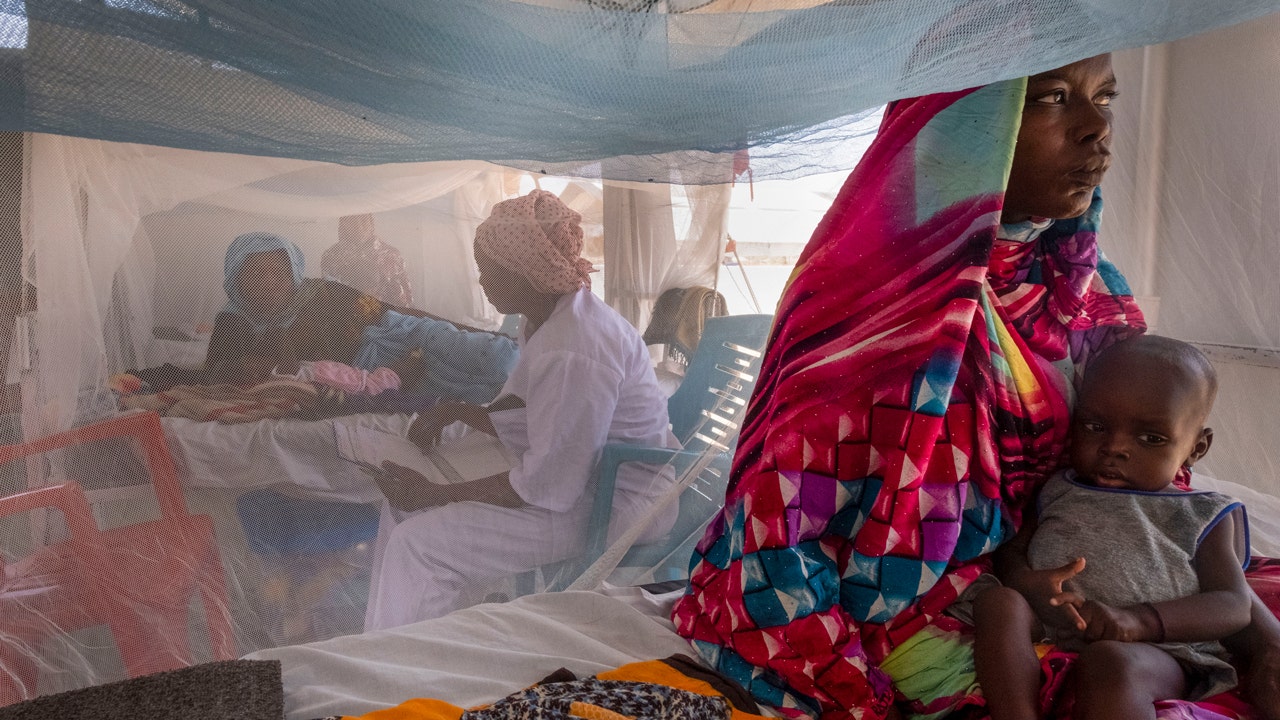
Sudanese paramilitary forces are encircling the only capital they haven’t captured in the western Darfur region, the United Nations said Friday, warning that an attack would have “devastating consequences” for the city’s 800,000 inhabitants.
At the same time, the U.N. said, the rival Sudanese Armed Forces “appear to be positioning themselves.”
SUDAN CONFLICT SPREADS TO KEY HUMANITARIAN SAFE HAVEN
U.N. Secretary-General António Guterres again called on the paramilitary Rapid Support Forces and government forces to refrain from fighting in the North Darfur area around its capital, El Fasher, U.N. spokesman Stephane Dujarric said.
The year-old war in Sudan between rival generals from the paramilitary and government forces who are vying for power has sparked “a crisis of epic proportions,” U.N. political chief Rosemary DiCarlo said last Friday. It has been fueled by weapons from foreign supporters who continue to flout U.N. sanctions aimed at helping end the conflict, she said, stressing that “This is illegal, it is immoral, and it must stop.”
Sudanese children suffering from malnutrition are treated at an MSF clinic in Metche Camp, Chad, near the Sudanese border, April 6, 2024. Many people here fled the fighting in Sudan’s vast western region of Darfur, where attacks by the Arab-dominated Rapid Support Forces on ethnic African civilians have revived memories of genocide. Sudanese paramilitary forces are encircling the only capital they haven’t captured in the western Darfur region, the United Nations said Friday, April 26, warning that an attack would have “devastating consequences” for the city’s 800,000 inhabitants. (AP Photo/Patricia Simon)
The U.N. humanitarian office said Friday that escalating tensions and clashes around El Fasher over the last two weeks have already resulted in the displacement of 40,000 people, as well as a number of civilian casualties.
“The security situation has effectively cut off humanitarian access to El Fasher,” the Office for the Coordination of Humanitarian Affairs known as OCHA, said.
According to humanitarian officials, El Fasher is an important location to reach other parts of the vast Darfur region, including for aid shipments from neighboring Chad and via a northern route from Port Sudan on Sudan’s northeast coast.
“Currently, more than a dozen trucks with life-saving supplies for 122,000 people are stranded in Ad Dabbah in neighboring Northern State, as they cannot move onward to El Fasher due to insecurity and lack of guarantees for safe passage,” OCHA said.
Dujarric said the secretary-general’s personal envoy for Sudan, Ramtane Lamamra, is engaging with the rival parties to de-escalate tensions, which are reported to have dramatically escalated.
OCHA also said it’s “imperative that the parties allow safe passage for civilians to leave El Fasher for safer areas.”
Sudan plunged into chaos in mid-April 2023, when long-simmering tensions between its military, led by Gen. Abdel Fattah Burhan, and the Rapid Support Forces paramilitary commanded by Mohammed Hamdan Dagalo broke out into street battles in the capital, Khartoum. Fighting has spread to other parts of the country, especially urban areas and the western Darfur region.
The U.N.’s DiCarlo painted a dire picture of the war’s impact — over 14,000 dead, tens of thousands wounded, looming famine with 25 million people in need of life-saving assistance, and over 8.6 million forced to flee their homes.
During the war, the Arab-dominated Rapid Support Forces have carried out brutal attacks in Darfur on ethnic African civilians, especially the ethnic Masalit, and have taken control of most of the vast region – with El Fasher its newest target.
Two decades ago, Darfur became synonymous with genocide and war crimes, particularly by the notorious Janjaweed Arab militias, against populations that identify as Central or East African.
That legacy appears to have returned, with the International Criminal Court’s prosecutor, Karim Khan, saying in late January there are grounds to believe both sides may be committing war crimes, crimes against humanity or genocide in Darfur.
The Rapid Support Forces were formed from Janjaweed fighters by former Sudanese President Omar al-Bashir, who ruled the country for three decades before being overthrown during a popular uprising in 2019. He is wanted by the International Criminal Court on charges of genocide and other crimes during the conflict in Darfur in the 2000s.
World
Brussels, my love? MEPs check out of Strasbourg after 5 eventful years

This edition comes to you from Strasbourg where MEPs voted on no fewer than 90 files.
Our guests this week include Robert Biedron, Polish MEP from the Socialist group, Deirdre Clune, outgoing Irish MEP from the European People’s Party and Jaume Duch, the spokesperson for the European Parliament.
The panel picked apart the highs and lows of the last 5 years at the European Parliament. From sealing deals on a migration pact after a decade of debate and the world’s first ever AI regulations, MEPs sounded satisfied that a lot of compromises had been clinched but still concerned about the major inequalities across Europe.
Jaume Duch hopes people will vote this June.
“Now it’s about the future of the continent, not just the European Union, the continent. Citizens need to know that this time it’s about how we are going to shape our future, not just for the next five years, maybe even ten or more, depending on the result of European elections.”
Watch ‘Brussels, my love?’ in the player above.
-

 Movie Reviews1 week ago
Movie Reviews1 week agoMovie Review: The American Society of Magical Negroes
-

 World1 week ago
World1 week agoIf not Ursula, then who? Seven in the wings for Commission top job
-

 Kentucky1 week ago
Kentucky1 week agoKentucky first lady visits Fort Knox schools in honor of Month of the Military Child
-

 World1 week ago
World1 week ago'You are a criminal!' Heckler blasts von der Leyen's stance on Israel
-

 Politics1 week ago
Politics1 week agoTrump trial: Jury selection to resume in New York City for 3rd day in former president's trial
-

 News1 week ago
News1 week agoHouse passes bill requiring warrant to purchase data from third parties
-
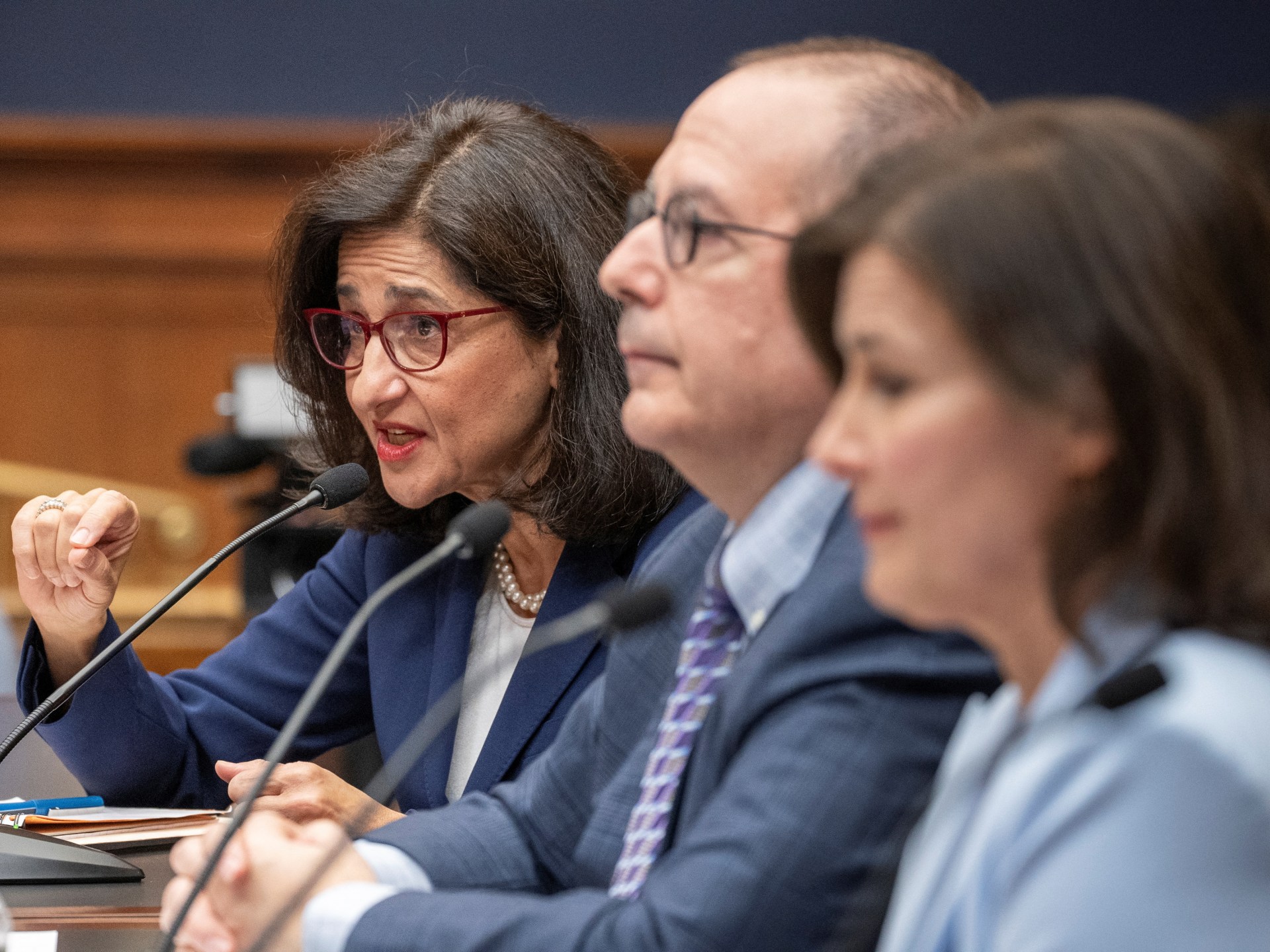
 World1 week ago
World1 week agoColumbia University leaders face scrutiny over anti-Semitism on campus
-
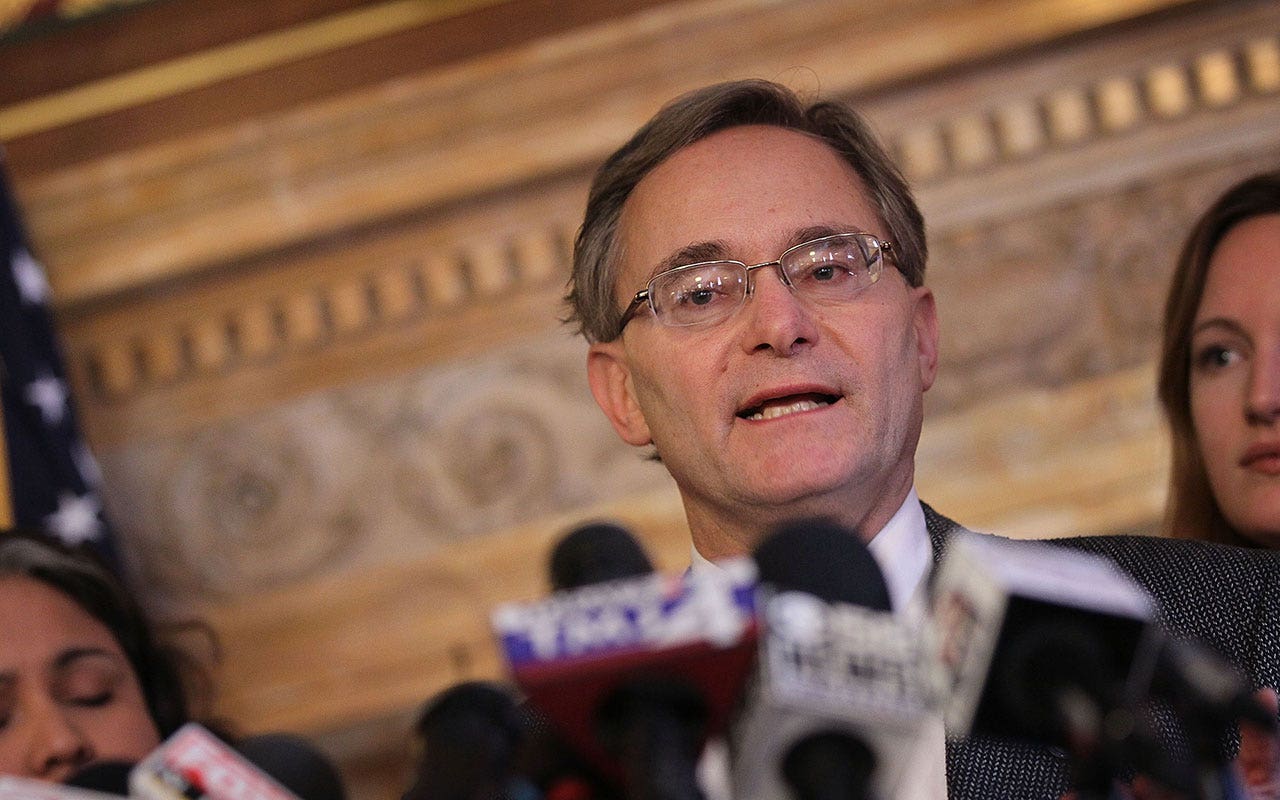
 Politics1 week ago
Politics1 week agoFormer Wisconsin Democratic Rep. Peter Barca launches congressional comeback bid
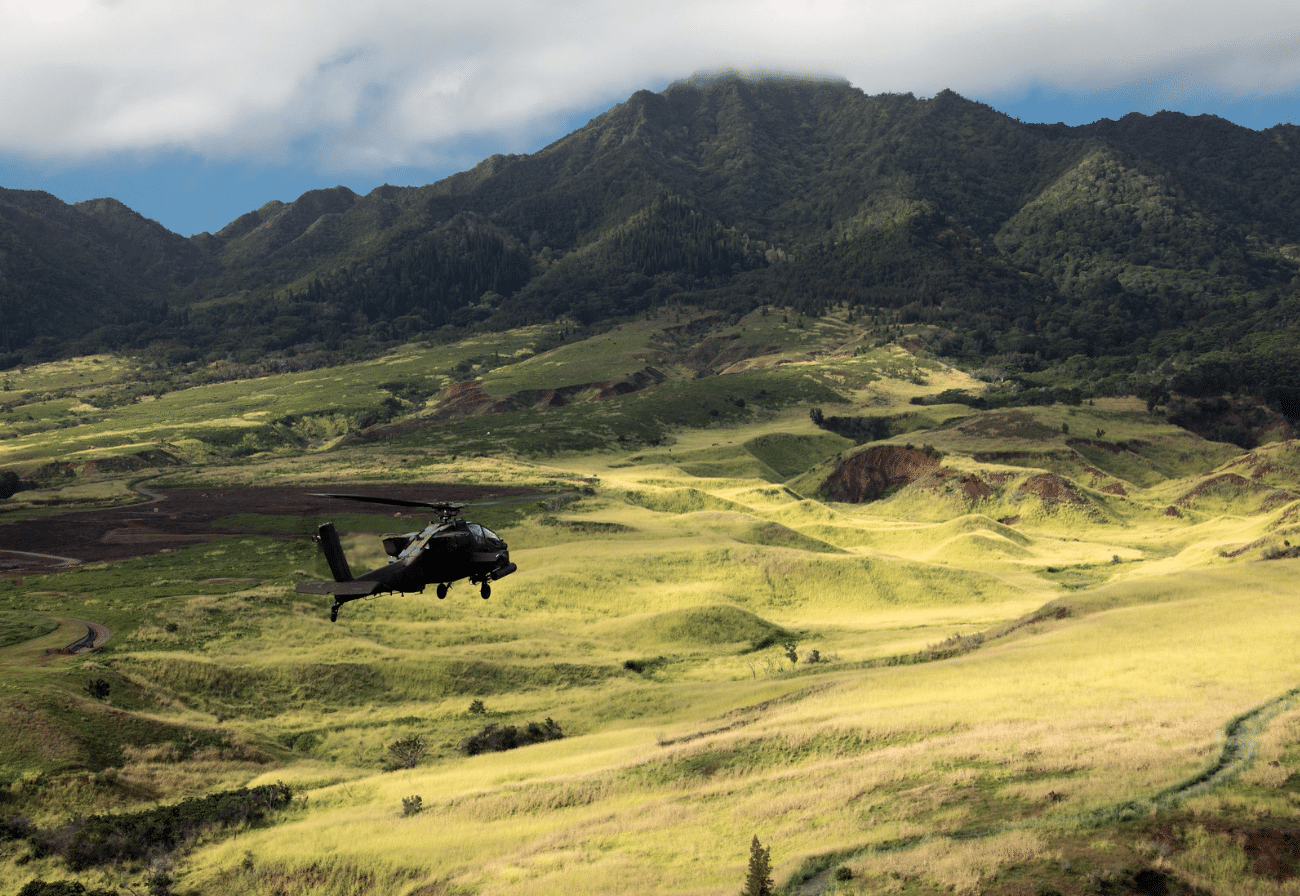

/cloudfront-us-east-2.images.arcpublishing.com/reuters/W4FR7SY5IVIHJCEV4VVWJUR6MI.jpg)
/cloudfront-us-east-2.images.arcpublishing.com/reuters/EDG6KXYIC5JLZBYKIG2E2SLZ6A.jpg)
/cloudfront-us-east-2.images.arcpublishing.com/reuters/4QO5Y6ZB4ZLWDC4N4CRSK42NRU.jpg)
